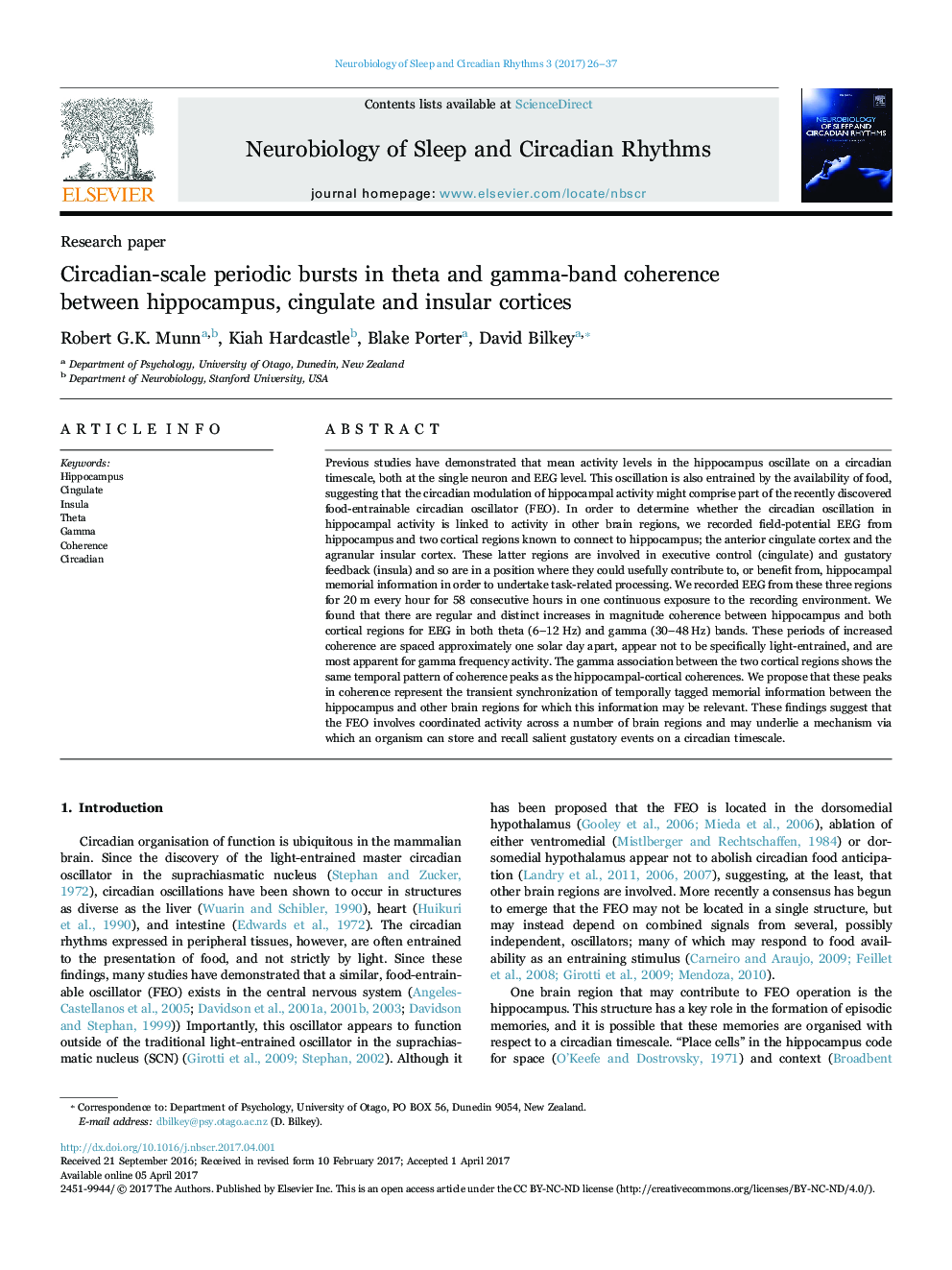| Article ID | Journal | Published Year | Pages | File Type |
|---|---|---|---|---|
| 5736143 | Neurobiology of Sleep and Circadian Rhythms | 2017 | 12 Pages |
Previous studies have demonstrated that mean activity levels in the hippocampus oscillate on a circadian timescale, both at the single neuron and EEG level. This oscillation is also entrained by the availability of food, suggesting that the circadian modulation of hippocampal activity might comprise part of the recently discovered food-entrainable circadian oscillator (FEO). In order to determine whether the circadian oscillation in hippocampal activity is linked to activity in other brain regions, we recorded field-potential EEG from hippocampus and two cortical regions known to connect to hippocampus; the anterior cingulate cortex and the agranular insular cortex. These latter regions are involved in executive control (cingulate) and gustatory feedback (insula) and so are in a position where they could usefully contribute to, or benefit from, hippocampal memorial information in order to undertake task-related processing. We recorded EEG from these three regions for 20Â m every hour for 58 consecutive hours in one continuous exposure to the recording environment. We found that there are regular and distinct increases in magnitude coherence between hippocampus and both cortical regions for EEG in both theta (6-12Â Hz) and gamma (30-48Â Hz) bands. These periods of increased coherence are spaced approximately one solar day apart, appear not to be specifically light-entrained, and are most apparent for gamma frequency activity. The gamma association between the two cortical regions shows the same temporal pattern of coherence peaks as the hippocampal-cortical coherences. We propose that these peaks in coherence represent the transient synchronization of temporally tagged memorial information between the hippocampus and other brain regions for which this information may be relevant. These findings suggest that the FEO involves coordinated activity across a number of brain regions and may underlie a mechanism via which an organism can store and recall salient gustatory events on a circadian timescale.
